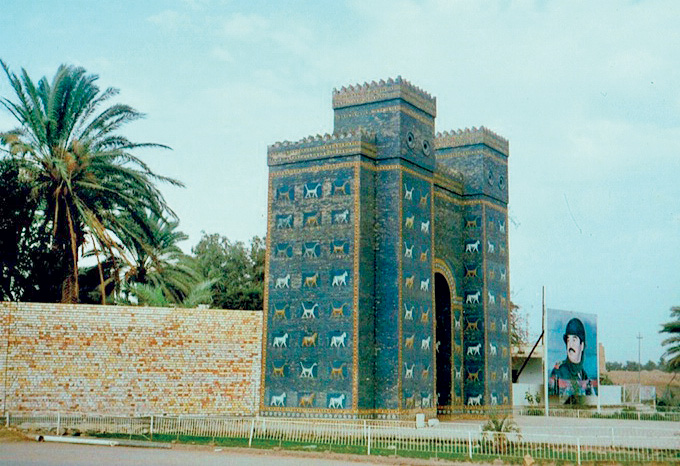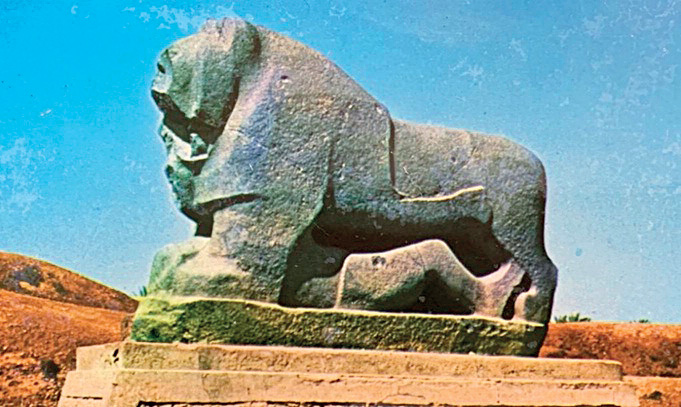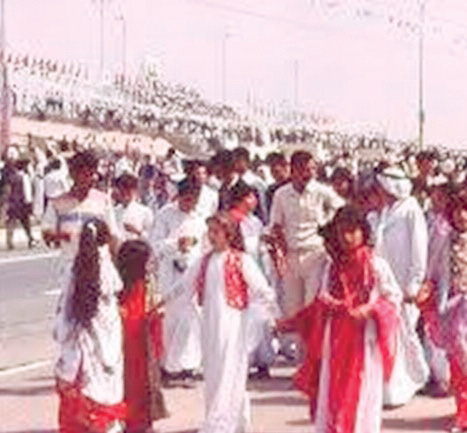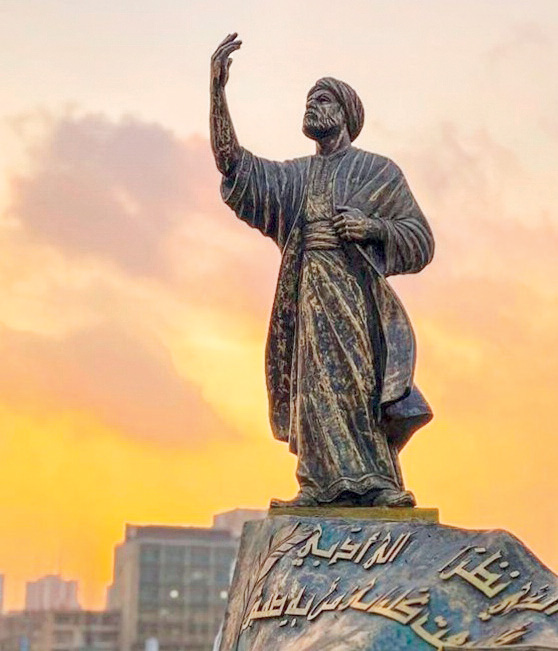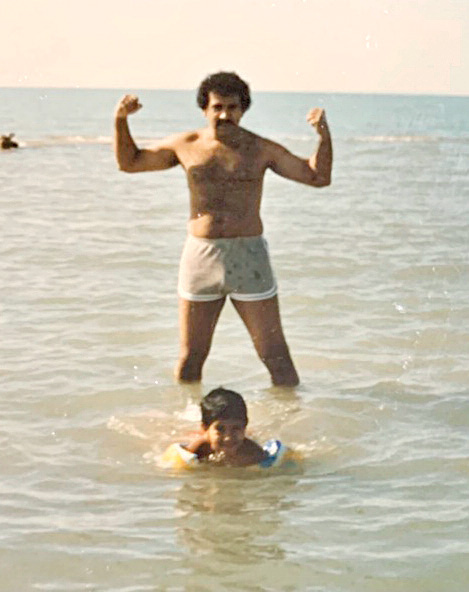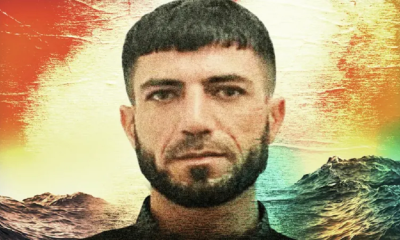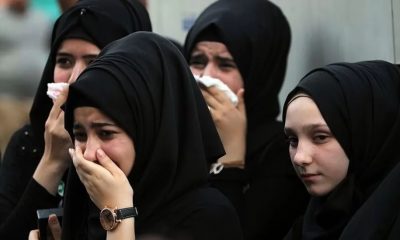Features
A Tourist in Iraq
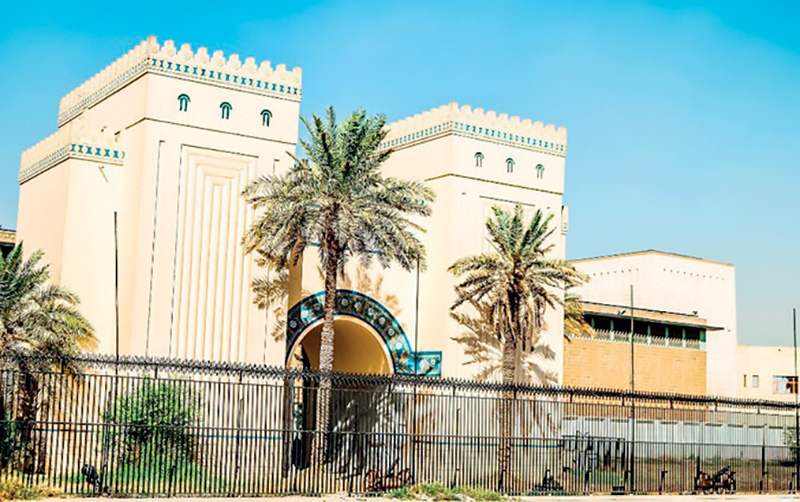
Part Three PASSIONS OF A GLOBAL HOTELIER
 Dr. Chandana (Chandi) Jayawardena DPhil
Dr. Chandana (Chandi) Jayawardena DPhil
President – Chandi J. Associates Inc. Consulting, Canada
Founder & Administrator – Global Hospitality Forum
chandij@sympatico.ca
When the 52 new recruits of Hotel Babylon Oberoi found themselves at a standstill, awaiting the final nod on their work permits, disappointment hung heavy in the air. The unforeseen two-week delay cast a shadow of uncertainty over our heads. Yet, rather than succumbing to frustration, I saw it as an opportunity—an unexpected window to explore the wonders of Iraq.
As we awaited bureaucratic clearance, I resolved to seize this hiatus as a chance to immerse myself in the rich tapestry of Iraqi culture. Having traversed much of the European Union, delved into Eastern Europe, wandered through Asia, and ventured into Africa briefly, the Middle East beckoned as the next chapter in my global odyssey. And what better place to begin than the vibrant heart of Baghdad?
With a thirst for knowledge and a hunger for adventure, I set out to uncover the layers of history and tradition that have shaped this land, despite its recent years of isolation due to conflict. It was time to embrace the warmth of Iraqi hospitality, delve into its ancient heritage, and unravel the mysteries hidden within its bustling streets and beyond…
Baghdad’s Treasures
Venturing beyond the confines of our hotel, we encountered an initial obstacle. A group of stern-faced police officers halted our progress, reminding us of the restricted zones that barred non-Iraqis. Undeterred, we quickly learned to navigate the city’s streets via taxi, ensuring our excursions continued unhindered.
Our curiosity led us to Baghdad’s renowned mosques, each a testament to the city’s rich cultural heritage. Yet, it was the allure of the national museum that truly captivated our interest. En route, our taxi driver insisted on a brief detour through the storied lanes of old Baghdad.
Al-Mutanabbi Street unfolded before us, a testament to centuries of literary legacy. Named after the revered 10th-century poet, Abul Tayeb al-Mutanabbi, the thoroughfare exuded an aura of historical significance. At its entrance stood an arch embellished with verses from the poet’s timeless works. An imposing bronze statue of al-Mutanabbi surveyed the flowing waters of the Tigris River which had influenced civilization throughout the known history of humanity.
- The Ishtar Gate
- The Lion of Babylon
Al-Mutanabbi’s literary prowess remains unmatched in the annals of Arabic literature. His verses, though often lauding the rulers of his era, bear testament to his sharp intellect and unparalleled wit. Through his poetry, he explored the intricacies of life’s philosophy, extolled the valour revered by Arab poets, and vividly depicted the tumultuous battles of his time. Yet, amidst the grandeur of his epic compositions, his verses also resonated with romance, adorned with exquisite similes and metaphors that continue to enrapture readers to this day. He says in one of his poems:
“The watchmen are not worried about the persons who visit you in the darkness because you are so beautiful and shining that you radiate in the darkness and anybody who meets you in the darkness is seen by your radiance. My beloved is very beautiful, and a very beautiful fragrance of musk is always emitted from her body as if she is made of musk. She is bright like the sun.”
The Iraq Museum nestles within the heart of Baghdad and stands as a testament to the enduring legacy of Mesopotamian civilization. Here, amid the echoes of ancient glory, the narrative of humanity’s journey unfolds amidst the relics of empires long past.
Inscribed upon the walls of this venerable institution is a history marked not only by triumphs and achievements but also by the sombre shadows of conflict and turmoil. Wars, with their crimson tide, have often marred the landscape where once peace, doves, and flowers flourished.
The museum’s history traces back to the aftermath of World War I, when European and American archaeologists embarked on expeditions that unearthed the treasures of Mesopotamia. In 1926, the Baghdad Archaeological Museum opened its doors, heralding the dawn of a new era in cultural preservation. By 1966, its expansive collection found a grand abode in the Al-Salihiyyah District, evolving into the renowned Iraq Museum. Within its hallowed halls reside the marvels of Babylonian, Sumerian, and Assyrian civilizations, alongside precious Islamic manuscripts, each whispering tales of bygone epochs.
The Iran-Iraq War of the 1980s forced its closure, compelling curators to safeguard its treasures from the ravages of conflict. Emerging unscathed, albeit sombre, it reopened its doors to a world hungry for knowledge and enlightenment, during the time I lived in Baghdad.
However, long after my time in Iraq, the dawn of the new millennium brought forth a harrowing chapter in the history of this museum. The looting that ensued during the chaos of the 2003 invasion stirred the echoes of ancient lamentations, as priceless artifacts vanished into the annals of uncertainty. Though the extent of the loss remains a subject of debate, the scars of that tumultuous period linger as a reminder of the fragility of our shared heritage.
As there were no signs of our work permits arriving, I suggested to a few of my colleagues, “let’s explore Babylon tomorrow,” but only a handful joined as others were pre-occupied with anxiety over the work permit challenge.
An Excursion in Babylon
Our quest for the ancient marvels of Babylon commenced with the break of dawn. Venturing some 100 kilometres south of Baghdad, we found ourselves amidst the remnants of a once-majestic civilization, nestled alongside the modern city of Al-Ḥillah. Babylon, an epitome of antiquity, stood proudly upon the banks of the Hilla branch of the Euphrates River, surrounded by a verdant expanse nourished by the waters of the Hilla canal.
Dating back to around 2,000 BCE, Babylon bore witness to the ebb and flow of empires across millennia. Under the reign of King Nebuchadnezzar II, its splendour reached unparalleled heights. His legacy, immortalized in the annals of history, adorned the city with three opulent palaces, resplendent in blue and yellow glazed tiles. The grandeur of Babylon, the city inside the walls occupied an area of 200 square miles encompassing an area roughly equivalent to modern-day Chicago, stood as a testament to human ingenuity and ambition, 4,000 years prior to our time.
Yet, the passage of time had not been kind to Babylon. Centuries of upheaval and plunder had stripped it of many treasures, smuggled away by European hands long ago. Under Saddam Hussein’s rule, efforts were made to resurrect the ancient city, albeit with mixed success.
The Ishtar Gate is central to Babylon’s allure, a marvel of ancient engineering and artistry. The Ishtar Gate was the eighth gate and the main entrance to the inner city of Babylon. Adorned with vibrant depictions of gods and goddesses, it stood as the portal to the city’s grand Processional Way, a path steeped in religious significance during the annual New Year celebrations. Lined with walls showing about 120 lions, bulls, dragons, and flowers on yellow and black glazed bricks, it symbolized the goddess Ishtar. Around the dawn of the twentieth century, excavations by German archaeologists had unearthed remnants of the gate.
King Nebuchadnezzar II also built several shrines, the largest of which, called Esagil, was dedicated to Marduk. The shrine stood 280 feet tall, nearly the size of a 26-story office building. Similarly elusive were the Hanging Gardens of Babylon, revered as one of the Seven Wonders of the Ancient World. Despite extensive searches, their precise location and existence remained shrouded in mystery. I was happy that the famous rooftop bar at Hotel Babylon Oberoi – ‘Hanging Gardens’ came within my portfolio.
The Lion of Babylon was among the few tangible relics of Babylon’s past, a stone sculpture dating back over 3,600 years. Carved from black basalt and weighing a staggering 7,000 kilograms, it depicted a Mesopotamian lion in a provocative pose above a supine human figure. The postures of the lion and human strongly suggest that they are having sexual intercourse. The statue is considered among the most important symbols of Babylon and Mesopotamian art in general. Rich in symbolism and heritage, the statue stood as a testament to Babylon’s enduring legacy, revered as a national symbol of Iraq.
As we immersed ourselves in the echoes of antiquity, the allure of Babylon’s storied past enveloped us. Amidst the ruins and relics, we glimpsed fragments of a civilization lost to time, a testament to the resilience of the human spirit across the ages. And as we retraced our steps back to Baghdad, the legacy of Babylon lingered in our hearts, a reminder of the enduring power of history to captivate and be inspired.
Exploring Northern Iraq
With work permits still pending, I found myself embarking on a journey to Mosul, Iraq’s second-largest city (with a population of 700,000 in 1989, and 1.8 million in 2024), under the directions of Madan Misra, the astute General Manager. Situated some 400 kilometres north of Baghdad along the banks of the Tigris River, Mosul held a storied past as the ancient Assyrian city of Nineveh, once the world’s largest metropolis.
Mosul is the major city in Northern Iraq. In 1989, Mosul stood as a vibrant cultural hub, blending historical richness with modern vitality. Its strategic location has long made it a nexus of trade and travel, with the majestic Mosul Dam serving as a testament to its enduring significance. The city’s annual spring events drew crowds from far and wide, infusing its streets with a palpable energy.
Returning from Mosul, my boss Misra, ever the discerning leader, sought my insights into the Nineveh Oberoi Hotel, a five-star hotel he oversaw. “Mr. Jayawardena, I must use your suggestions, wisely. You are new here and your eyes are fresh. Give me all details!”, he pushed me when I spoke diplomatically and gave him an edited version of my observations. Impressed with my extended feedback, Misra entrusted me with a new task: to evaluate a neglected resort hotel in Dokan, nestled near the Iranian border. He was eager to capitalize on potential opportunities for Oberoi business expansion in Iraq.
Although two hotels I managed in the past as General Manager – The Lodge and The Village at Habarana were not internationally branded, Misra knew that those were two of the largest and the best resort hotels in Sri Lanka. “Mr. Jayawardena, you are the only person in my team in Iraq who had been a hotel General Manager. Therefore, I am going to pick your brains from time to time!” I was pleased to hear that from my boss.
Embarking on the scenic journey northward towards Dokan, we marvelled at the diversity of the landscape. We paused for a refreshing dip at a lake and a sumptuous Kurdish lunch in Kirkuk, a city renowned for its multicultural tapestry. It is now identified as the ‘Jerusalem of Kurdistan’. Arriving in Dokan, we were greeted by the serene beauty of its surroundings, enhanced by the sparkling expanse of the Dokan Lake.
Marlon and I having a quick lake dip
Despite its natural allure, the resort in Dokan itself fell short of Oberoi standards, requiring substantial investment to meet the luxury benchmarks upheld by the brand. In my detailed report to Misra, I advised against Oberoi’s involvement in managing that property, recognizing the need for alignment with the company’s esteemed reputation and vision.
Re-commencing Painting
On returning to Baghdad, we were now counting nine days without formal work permits. I did not want to waste any time just idling. I decided to focus on an old hobby of mine – visual arts. At one point when I was 17-years old I displayed promise as a painter and a sculptor. My parents (who were both artists) and I discussed the option of my joining Heywood Art School in Ceylon (now the University of the Visual and Performing Arts) and becoming a professional painter and a sculptor. Instead, I joined Ceylon Hotel School and became a hotelier. However, back in my mind, I always wanted one day to become a semi-professional visual artist (which I am now).
In the mid-1980s, I took some private lessons from a veteran painter, Stanley Abeysinghe, who was a Past Principal of Heywood Art School, and a friend of my father. In Baghdad I started doing small paintings and encouraged my son, Marlon, to paint with me, as my father did, when I was Marlon’s age. After a few days, we had produced around twenty small abstract paintings on paper. Ignoring my wife’s annoyance, Marlon and I decorated a wall in our family suite with those paintings. Marlon called that wall, ‘Our Art Gallery’, and proudly encouraged any visitor to our suit to enjoy our artwork, and comment.
Finally, Allowed to Work
After 14 days of ‘no work’, we received the good news. Work permits for all 52 hotel employees who came from Sri Lanka had been approved by the Iraqi authorities. We were happy about it, and I was even more happy about the two ‘work-free’ weeks which allowed us to explore Iraq as tourists.
I immediately called a management meeting of my division and recommenced implementing our business plans, with my team. “Let’s create and promote a series of international food festivals with themes preferred by our Iraqi customers,” I motivated the team. We agreed to create a buzz and present food festivals and entertainment that Baghdad had never experienced before at a five-star hotel…
Features
Inescapable need to deal with the past

The sudden reemergence of two major incidents from the past, that had become peripheral to the concerns of people today, has jolted the national polity and come to its centre stage. These are the interview by former president Ranil Wickremesinghe with the Al Jazeera television station that elicited the Batalanda issue and now the sanctioning of three former military commanders of the Sri Lankan armed forces and an LTTE commander, who switched sides and joined the government. The key lesson that these two incidents give is that allegations of mass crimes, whether they arise nationally or internationally, have to be dealt with at some time or the other. If they are not, they continue to fester beneath the surface until they rise again in a most unexpected way and when they may be more difficult to deal with.
In the case of the Batalanda interrogation site, the sudden reemergence of issues that seemed buried in the past has given rise to conjecture. The Batalanda issue, which goes back 37 years, was never totally off the radar. But after the last of the commission reports of the JVP period had been published over two decades ago, this matter was no longer at the forefront of public consciousness. Most of those in the younger generations who were too young to know what happened at that time, or born afterwards, would scarcely have any idea of what happened at Batalanda. But once the issue of human rights violations surfaced on Al Jazeera television they have come to occupy centre stage. From the day the former president gave his fateful interview there are commentaries on it both in the mainstream media and on social media.
There seems to be a sustained effort to keep the issue alive. The issues of Batalanda provide good fodder to politicians who are campaigning for election at the forthcoming Local Government elections on May 6. It is notable that the publicity on what transpired at Batalanda provides a way in which the outcome of the forthcoming local government elections in the worst affected parts of the country may be swayed. The problem is that the main contesting political parties are liable to be accused of participation in the JVP insurrection or its suppression or both. This may account for the widening of the scope of the allegations to include other sites such as Matale.
POLITICAL IMPERATIVES
The emergence at this time of the human rights violations and war crimes that took place during the LTTE war have their own political reasons, though these are external. The pursuit of truth and accountability must be universal and free from political motivations. Justice cannot be applied selectively. While human rights violations and war crimes call for universal standards that are applicable to all including those being committed at this time in Gaza and Ukraine, political imperatives influence what is surfaced. The sanctioning of the four military commanders by the UK government has been justified by the UK government minister concerned as being the fulfilment of an election pledge that he had made to his constituents. It is notable that the countries at the forefront of justice for Sri Lanka have large Tamil Diasporas that act as vote banks. It usually takes long time to prosecute human rights violations internationally whether it be in South America or East Timor and diasporas have the staying power and resources to keep going on.
In its response to the sanctions placed on the military commanders, the government’s position is that such unilateral decisions by foreign government are not helpful and complicate the task of national reconciliation. It has faced criticism for its restrained response, with some expecting a more forceful rebuttal against the international community. However, the NPP government is not the first to have had to face such problems. The sanctioning of military commanders and even of former presidents has taken place during the periods of previous governments. One of the former commanders who has been sanctioned by the UK government at this time was also sanctioned by the US government in 2020. This was followed by the Canadian government which sanctioned two former presidents in 2023. Neither of the two governments in power at that time took visibly stronger stands.
In addition, resolutions on Sri Lanka have been a regular occurrence and have been passed over the Sri Lankan government’s opposition since 2012. Apart from the very first vote that took place in 2009 when the government promised to take necessary action to deal with the human rights violations of the past, and won that vote, the government has lost every succeeding vote with the margins of defeat becoming bigger and bigger. This process has now culminated in an evidence gathering unit being set up in Geneva to collect evidence of human rights violations in Sri Lanka that is on offer to international governments to use. This is not a safe situation for Sri Lankan leaders to be in as they can be taken before international courts in foreign countries. It is important for Sri Lanka’s sovereignty and dignity as a country that this trend comes to an end.
COMPREHENSIVE SOLUTION
A peaceful future for Sri Lanka requires a multi-dimensional approach that addresses the root causes of conflict while fostering reconciliation, justice, and inclusive development. So far the government’s response to the international pressures is to indicate that it will strengthen the internal mechanisms already in place like the Office on Missing Persons and in addition to set up a truth and reconciliation commission. The difficulty that the government will face is to obtain a national consensus behind this truth and reconciliation commission. Tamil parties and victims’ groups in particular have voiced scepticism about the value of this mechanism. They have seen commissions come and commissions go. Sinhalese nationalist parties are also highly critical of the need for such commissions. As the Nawaz Commission appointed to identify the recommendations of previous commissions observed, “Our island nation has had a surfeit of commissions. Many witnesses who testified before this commission narrated their disappointment of going before previous commissions and achieving nothing in return.”
Former minister Prof G L Peiris has written a detailed critique of the proposed truth and reconciliation law that the previous government prepared but did not present to parliament.
In his critique, Prof Peiris had drawn from the South African truth and reconciliation commission which is the best known and most thoroughly implemented one in the world. He points out that the South African commission had a mandate to cover the entire country and not only some parts of it like the Sri Lankan law proposes. The need for a Sri Lankan truth and reconciliation commission to cover the entire country and not only the north and east is clear in the reemergence of the Batalanda issue. Serious human rights violations have occurred in all parts of the country, and to those from all ethnic and religious communities, and not only in the north and east.
Dealing with the past can only be successful in the context of a “system change” in which there is mutual agreement about the future. The longer this is delayed, the more scepticism will grow among victims and the broader public about the government’s commitment to a solution. The important feature of the South African commission was that it was part of a larger political process aimed to build national consensus through a long and strenuous process of consultations. The ultimate goal of the South African reconciliation process was a comprehensive political settlement that included power-sharing between racial groups and accountability measures that facilitated healing for all sides. If Sri Lanka is to achieve genuine reconciliation, it is necessary to learn from these experiences and take decisive steps to address past injustices in a manner that fosters lasting national unity. A peaceful Sri Lanka is possible if the government, opposition and people commit to truth, justice and inclusivity.
by Jehan Perera
Features
Unleashing Minds: From oppression to liberation

 Education should be genuinely ‘free’—not just in the sense of being free from privatisation, but also in a way that empowers students by freeing them from oppressive structures. It should provide them with the knowledge and tools necessary to think critically, question the status quo, and ultimately liberate themselves from oppressive systems.
Education should be genuinely ‘free’—not just in the sense of being free from privatisation, but also in a way that empowers students by freeing them from oppressive structures. It should provide them with the knowledge and tools necessary to think critically, question the status quo, and ultimately liberate themselves from oppressive systems.
Education as an oppressive structure
Education should empower students to think critically, challenge oppression, and envision a more just and equal world. However, in its current state, education often operates as a mechanism of oppression rather than liberation. Instead of fostering independent thinking and change, the education system tends to reinforce the existing power dynamics and social hierarchies. It often upholds the status quo by teaching conformity and compliance rather than critical inquiry and transformation. This results in the reproduction of various inequalities, including economic, racial, and social disparities, further entrenching divisions within society. As a result, instead of being a force for personal and societal empowerment, education inadvertently perpetuates the very systems that contribute to injustice and inequality.
Education sustaining the class structure
Due to the widespread privatisation of education, the system continues to reinforce and sustain existing class structures. Private tuition centres, private schools, and institutions offering degree programmes for a fee all play a significant role in deepening the disparities between different social classes. These private entities often cater to the more affluent segments of society, granting them access to superior education and resources. In contrast, students from less privileged backgrounds are left with fewer opportunities and limited access to quality education, exacerbating the divide between the wealthy and the underprivileged. This growing gap in educational access not only limits social mobility but also perpetuates a cycle where the privileged continue to secure better opportunities while the less fortunate struggle to break free from the constraints of their socio-economic status.
Gender Oppression
Education subtly perpetuates gender oppression in society by reinforcing stereotypes, promoting gender insensitivity, and failing to create a gender-sensitive education system. And some of the policymakers do perpetuate this gender insensitive education by misinforming people. In a recent press conference, one of the former members of Parliament, Wimal Weerawansa, accused gender studies of spreading a ‘disease’ among students. In the year 2025, we are still hearing such absurdities discouraging gender studies. It is troubling and perplexing to hear such outdated and regressive views being voiced by public figures, particularly at a time when societies, worldwide, are increasingly embracing diversity and inclusion. These comments not only undermine the importance of gender studies as an academic field but also reinforce harmful stereotypes that marginalise individuals who do not fit into traditional gender roles. As we move forward in an era of greater social progress, such antiquated views only serve to hinder the ongoing work of fostering equality and understanding for all people, regardless of gender identity.
Students, whether in schools or universities, are often immersed in an educational discourse where gender is treated as something external, rather than an essential aspect of their everyday lives. In this framework, gender is framed as a concern primarily for “non-males,” which marginalises the broader societal impact of gender issues. This perspective fails to recognise that gender dynamics affect everyone, regardless of their gender identity, and that understanding and addressing gender inequality is crucial for all individuals in society.
A poignant example of this issue can be seen in the recent troubling case of sexual abuse involving a medical doctor. The public discussion surrounding the incident, particularly the media’s decision to disclose the victim’s confidential statement, is deeply concerning. This lack of respect for privacy and sensitivity highlights the pervasive disregard for gender issues in society.
What makes this situation even more alarming is that such media behaviour is not an isolated incident, but rather reflects a broader pattern in a society where gender sensitivity is often dismissed or ignored. In many circles, advocating for gender equality and sensitivity is stigmatised, and is even seen as a ‘disease’ or a disruptive force to the status quo. This attitude contributes to a culture where harmful gender stereotypes persist, and where important conversations about gender equity are sidelined or distorted. Ultimately, this reflects the deeper societal need for an education system that is more attuned to gender sensitivity, recognising its critical role in shaping the world students will inherit and navigate.
To break free from these gender hierarchies there should be, among other things, a gender sensitive education system, which does not limit gender studies to a semester or a mere subject.
Ragging
The inequality that persists in class and regional power structures (Colombo and non-Colombo division) creeps into universities. While ragging is popularly seen as an act of integrating freshers into the system, its roots lie in the deeply divided class and ethno-religious divisions within society.
In certain faculties, senior students may ask junior female students to wear certain fabrics typically worn at home (cheetta dresses) and braid their hair into two plaits, while male students are required to wear white, long-sleeved shirts without belts. Both men and women must wear bathroom slippers. These actions are framed as efforts to make everyone equal, free from class divisions. However, these gendered and ethicised practices stem from unequal and oppressive class structures in society and are gradually infiltrating university culture as mechanisms of oppression.The inequality that persists in gradually makes its way into academic institutions, particularly universities.
These practices are ostensibly intended to create a sense of uniformity and equality among students, removing visible markers of class distinction. However, what is overlooked is that these actions stem from deeply ingrained and unequal social structures that are inherently oppressive. Instead of fostering equality, they reinforce a system where hierarchical power dynamics in the society—rooted in class, gender, and region—are confronted with oppression and violence which is embedded in ragging, creating another system of oppression.
Uncritical Students
In Sri Lanka, and in many other countries across the region, it is common for university students to address their lecturers as ‘Sir’ and ‘Madam.’ This practice is not just a matter of politeness, but rather a reflection of deeply ingrained societal norms that date back to the feudal and colonial eras. The use of these titles reinforces a hierarchical structure within the educational system, where authority is unquestioned, and students are expected to show deference to their professors.
Historically, during colonial rule, the education system was structured around European models, which often emphasised rigid social distinctions and the authority of those in power. The titles ‘Sir’ and ‘Madam’ served to uphold this structure, positioning lecturers as figures of authority who were to be respected and rarely challenged. Even after the end of colonial rule, these practices continued to permeate the education system, becoming normalised as part of the culture.
This practice perpetuates a culture of obedience and respect for authority that discourages critical thinking and active questioning. In this context, students are conditioned to see their lecturers as figures of unquestionable authority, discouraging dialogue, dissent, or challenging the status quo. This hierarchical dynamic can limit intellectual growth and discourage students from engaging in open, critical discussions that could lead to progressive change within both academia and society at large.
Unleashing minds
The transformation of these structures lies in the hands of multiple parties, including academics, students, society, and policymakers. Policymakers must create and enforce policies that discourage the privatisation of education, ensure equal access for all students, regardless of class dynamics, gender, etc. Education should be regarded as a fundamental right, not a privilege available only to a select few. Such policies should also actively promote gender equality and inclusivity, addressing the barriers that prevent women, LGBTQ+ individuals, and other marginalised genders from accessing and succeeding in education. Practices that perpetuate gender inequality, such as sexism, discrimination, or gender-based violence, need to be addressed head-on. Institutions must prioritise gender studies and sensitivity training to cultivate an environment of respect and understanding, where all students, regardless of gender, feel safe and valued.
At the same time, the micro-ecosystems of hierarchy within institutions—such as maintaining outdated power structures and social divisions—must be thoroughly examined and challenged. Universities must foster environments where critical thinking, mutual respect, and inclusivity—across both class and gender—are prioritised. By creating spaces where all minds can flourish, free from the constraints of entrenched hierarchies, we can build a more equitable and intellectually vibrant educational system—one that truly unleashes the potential of all students, regardless of their social background.
(Anushka Kahandagamage is the General Secretary of the Colombo Institute for Human Sciences)
Kuppi is a politics and pedagogy happening on the margins of the lecture hall that parodies, subverts, and simultaneously reaffirms social hierarchies.
By Anushka Kahandagamage
Features
New vision for bassist Benjy
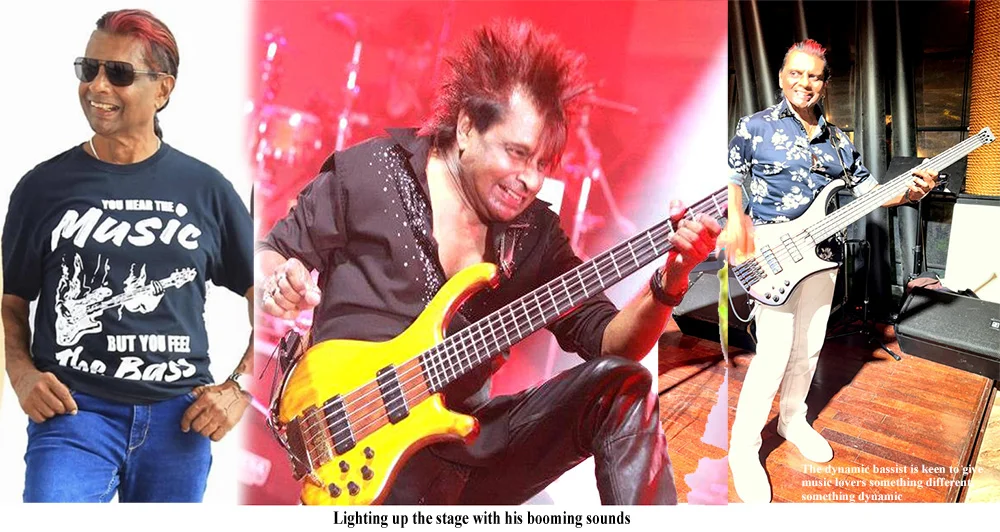
It’s a known fact that whenever bassist Benjy Ranabahu booms into action he literally lights up the stage, and the exciting news I have for music lovers, this week, is that Benjy is coming up with a new vision.
One thought that this exciting bassist may give the music scene a layoff, after his return from the Seychelles early this year.
At that point in time, he indicated to us that he hasn’t quit the music scene, but that he would like to take a break from the showbiz setup.
“I’m taking things easy at the moment…just need to relax and then decide what my future plans would be,” he said.
However, the good news is that Benjy’s future plans would materialise sooner than one thought.
Yes, Benjy is putting together his own band, with a vision to give music lovers something different, something dynamic.
He has already got the lineup to do the needful, he says, and the guys are now working on their repertoire.
The five-piece lineup will include lead, rhythm, bass, keyboards and drums and the plus factor, said Benjy, is that they all sing.
A female vocalist has also been added to this setup, said Benjy.
“She is relatively new to the scene, but with a trained voice, and that means we have something new to offer music lovers.”
The setup met last week and had a frank discussion on how they intend taking on the music scene and everyone seems excited to get on stage and do the needful, Benjy added.
Benjy went on to say that they are now spending their time rehearsing as they are very keen to gel as a team, because their skills and personalities fit together well.
“The guys I’ve got are all extremely talented and skillful in their profession and they have been around for quite a while, performing as professionals, both here and abroad.”
Benjy himself has performed with several top bands in the past and also had his own band – Aquarius.
Aquarius had quite a few foreign contracts, as well, performing in Europe and in the Middle East, and Benjy is now ready to do it again!
-

 Sports2 days ago
Sports2 days agoSri Lanka’s eternal search for the elusive all-rounder
-

 Features6 days ago
Features6 days agoCelebrating 25 Years of Excellence: The Silver Jubilee of SLIIT – PART I
-

 Business6 days ago
Business6 days agoCEB calls for proposals to develop two 50MW wind farm facilities in Mullikulam
-

 News3 days ago
News3 days agoGnanasara Thera urged to reveal masterminds behind Easter Sunday terror attacks
-

 Business4 days ago
Business4 days agoAIA Higher Education Scholarships Programme celebrating 30-year journey
-

 Features6 days ago
Features6 days agoNotes from AKD’s Textbook
-

 News2 days ago
News2 days agoComBank crowned Global Finance Best SME Bank in Sri Lanka for 3rd successive year
-

 Features2 days ago
Features2 days agoSanctions by The Unpunished


